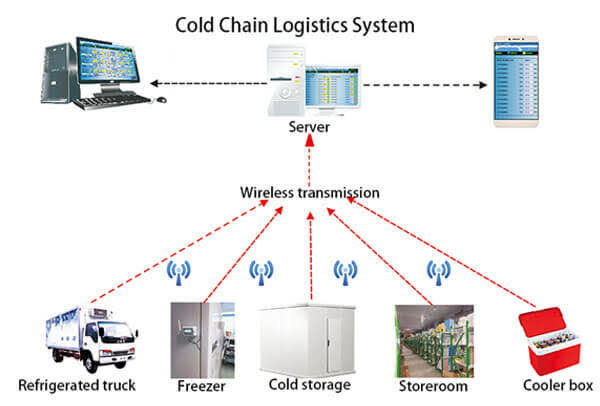SMART ENERGY MANAGEMENT : A FORMULA TO IMPROVE ENERGY EFFICIENY AND SUSTAINABILITY IN THE COLD CHAIN INDUSTRY (source : GCCA News, edited by ARPI)
The Cold Chain industry is an energy hog, especially when consistent refrigeration and heating processes are involved. Refrigeration is an energy-intensive process that accounts for 15% of worldwide electricity production. To reduce energy waste and maximize production performance, leading companies are flocking to new technologies to capture key energy and production data. Data – when monitored and managed properly – provides visibility into how you’re consuming energy and what the impact to your operation is.
Connect Your Production Data with your Energy Data
The fastest path to greater profits in the Cold Chain industry lies in leveraging real-time energy data to identify energy inefficiencies and waste. Energy management can help companies address three key areas:
Optimizing Production
Reducing or adjusting energy use at the right time requires a comprehensive understanding of your facilities’ operational and energy patterns. Understanding which assets are performing well and where you can improve operations. Lowering the costs associated with production, will in-turn lower the price of your goods.
Reducing Energy Cost and Intensity
Fluctuating rate tariffs, facilities spread across multiple states, and complex utility contracts can make managing energy costs challenging. A fully automated energy management
software solution can provide unprecedented levels of insight and control, meaning that your energy usage and spend is no longer a “black box.”
Boosting Margins
Traditional Energy Management Systems can track basic building systems and weather performance. But without connecting those findings to production processes and data, real-time adjustments cannot be uncovered or matched to a facility. To truly drive energy efficiency, decisions need to be made immediately with real-time data. Imagine being able to change an order when raw material prices rise, alter energy usage during rate spikes, or convert to lower power usage during certain weather events.
Reduce Your Carbon Footprint Through Energy Efficiency
The cold chain industry recognizes its impact on emissions, and many are already stepping-up to enact real change. Pressure across key supply chain stakeholders is also driving the need to create energy efficiencies and reduce carbon emissions. And improving energy efficiency is the most direct way to reduce your carbon footprint.
Financial savings combined with increased sustainability goals are driving industry leaders to reduce their energy usage. Engie Impact found that 75% of global executives believe that excellent sustainability execution provides a competitive advantage. Companies such as Danone, Nestle, PepsiCo and General Mills have emerged as sustainability leaders, leveraging energy efficiency and resilient value chains as drivers for increased revenue, decreased costs, and improved operations.
Select Automated Technology to Fast-Track Savings
Software, data, and processes are the keys to success. However, few industrial companies are equipped with the right tools and expertise to tackle energy efficiency at scale. For starters, most industrial cold chain facilities run on legacy systems that were never designed for cloud connectivity. Ripping these systems out is not a viable option. Getting data out of the facility requires the integration of myriad IT and OT systems – with industrial-grade security.
Then, to make sense of it all, these different data streams must be integrated and normalized. And finally, to actually make better decisions, users need to see the effects of their actions in real time.
This is where advanced energy insights and management software can be invaluable. Smart sensor and analytics solutions pinpoint exactly how energy is being used, right down to the device level and identify key areas to address to improve operational efficiency.
The world’s largest cold chain company uses Energy Intensity as a key metric – measuring not just energy used, but the amount of energy used for each unit of food production. This process helps normalize the data despite an ever-changing baseline.
Importantly, it also centers the company’s efficiency efforts on what’s most important: production. That mindset leads to initiatives that get to the very heart of their operations, rather than peripheral loads. For example, space optimization has allowed them to pack more product into each warehouse, reducing the need for new capacity as the company grows.
A related KPI is Energy Cost Intensity (also called Throughput Energy Cost), which accounts for the timing of electricity use. This captures the effects of load shifting and demand response efforts that save money by avoiding peak times. One facility saves roughly $2,000 a month just by shifting one process to off-peak hours.

